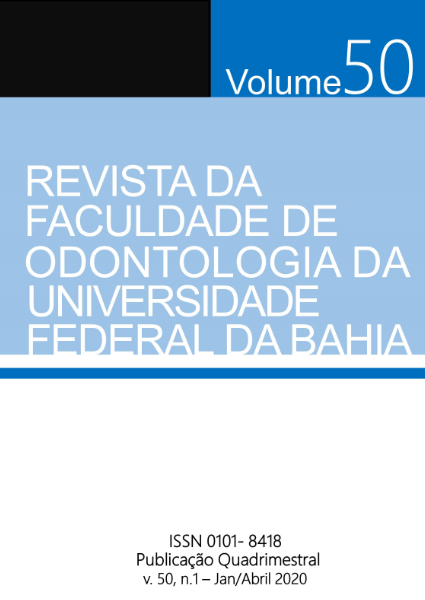CORREÇÃO FUNCIONAL E ESTÉTICA DE SEQUELA DE FRATURA FRONTO-NASO-ORBITO-ETMOIDAL: RELATO DE CASO CLÍNICO FUNCTIONAL AND AESTHETIC CORRECTION OF FRONTO-NASO-ORBITO-ETHMOIDAL FRACTURE SEQUEL: CLINICAL CASE REPORT
DOI:
https://doi.org/10.9771/revfo.v50i1.37112Palavras-chave:
PolimetilMetacrilato, Fratura do Crânio com Afundamento, Complicações, Polymethyl Methacrylate, Skull Fracture, Depressed, Complication.Resumo
As Fraturas Fronto-Naso-Orbito-Etmoidais, conhecidas como fraturas FNOE,
são resultantes de um trauma contundente de alta energia no terço médio
e superior da face. São pouco frequentes, mas quando presentes ocorrem
concomitantemente com o trauma crânio encefálico (TCE) ou com outras
fraturas complexas da face. Apresentando uma frequência aproximada de
5% a 15% dos traumas faciais em crianças e adultos respectivamente, as fraturas
NOE são encontradas mais comumente após acidentes por veículos
automotores, agressão física, quedas ou acidentes ciclísticos. O complexo
naso-orbito-etmoidal é uma área compacta, porém anatomicamente complexa,
possuindo várias apresentações clínicas que dificultam o seu diagnóstico
e tratamento. O diagnóstico e tratamento das fraturas NOE é de
difícil realização e por este motivo a realização de um exame clínico minucioso
associado a uma boa avaliação imaginológica é de grande importância
nestes traumas, pois diagnóstico incorreto e o tratamento inadequado
ou tardio geralmente resultam em sequelas estéticas e funcionais. O tratamento
deste tipo de fratura deve ser definido após a identificação da extensão,
tipo de fratura e estruturas acometidas de forma a restaurar função
e forma face média. O objetivo deste artigo é relatar um caso de sequela
de fratura NOE onde haviam queixas estéticas e respiratórias, tratado com
acesso coronal e posterior redução de fratura de OPN e correção estética
de dorso nasal e glabela com o uso de cimento de polimetilmetacrilato.
Fronto-Naso-Orbito-Etmoidal Fractures, known as FNOE fractures, are the
result of a blunt trauma of high energy in the middle and upper third of
the face. It is uncommon, but when present it occurs concomitantly with
traumatic brain injury (TBI) or with other complex fractures of the face.
Presenting an approximate frequency of 5% to 15% of facial traumas in
children and adults respectively, NOE fractures are most commonly found
after motor vehicle accidents, physical aggression, falls or cycling accidents.
The naso-orbito-ethmoidal complex is a compact but anatomically
complex area, with several clinical presentations that make it difficult to
diagnose and treat it. The diagnosis and treatment of NOE fractures is difficult
to perform and therefore a thorough clinical examination associated
with a good imaging evaluation is of great importance in these traumas,
since incorrect diagnosis and inadequate or late treatment usually result
in aesthetic and functional. The treatment of this type of fracture should
be defined after the identification of the extension, type of fracture and
structures affected in order to restore function and form face to medium.
The objective of this article is to report a case of NOE fracture sequelae
where there were aesthetic and respiratory complaints, treated with
coronal access and subsequent reduction of OPN fracture and aesthetic
correction of nasal dorsum and glabella with the use of polymethylmethacrylate
cement.
Downloads
Publicado
Como Citar
Edição
Seção
Licença
Copyright (c) 2020 Revista da Faculdade de Odontologia da UFBA

Este trabalho está licenciado sob uma licença Creative Commons Attribution-NonCommercial 4.0 International License.

